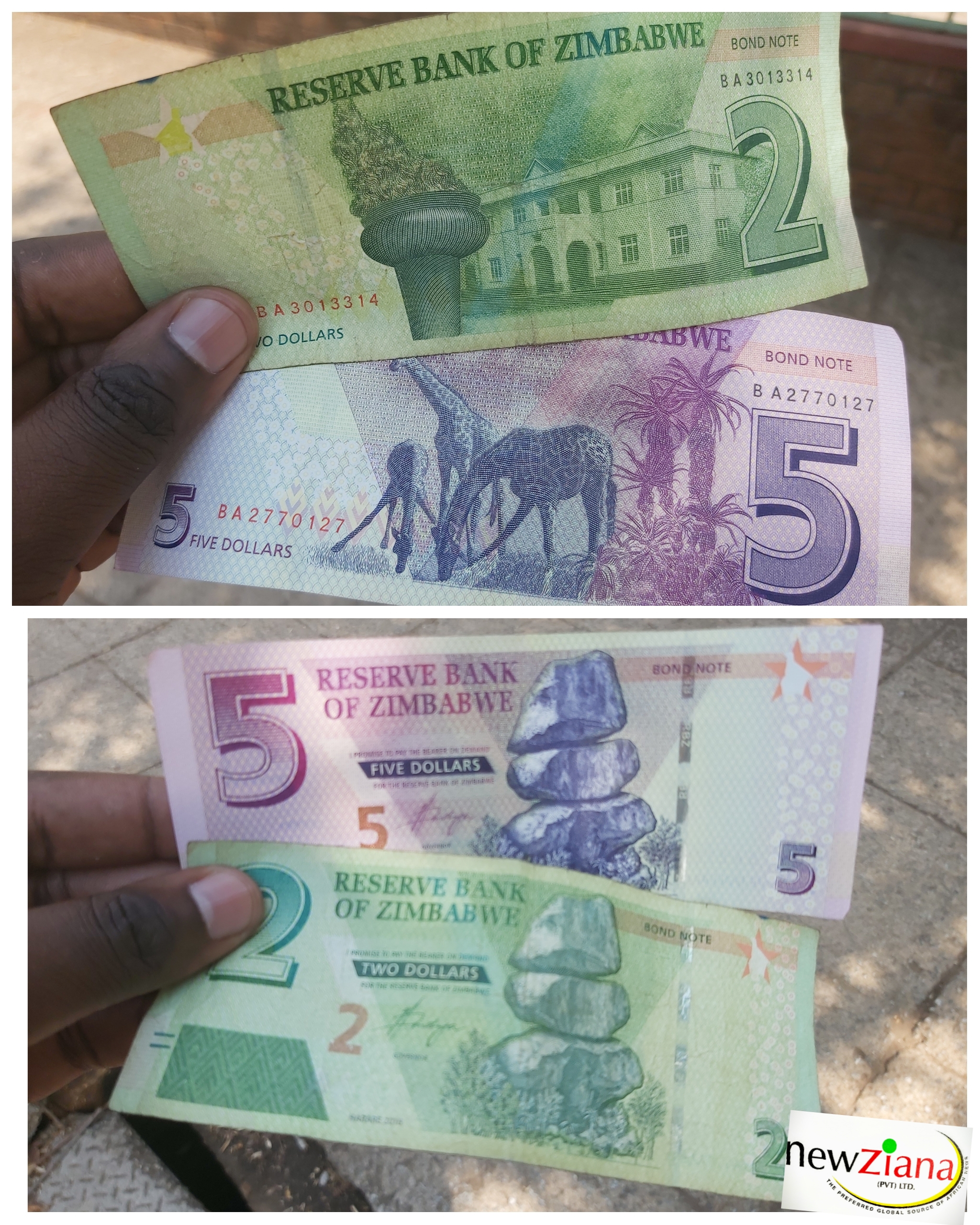New Zim$ notes to have same features as bond notes
Share

Harare (New Ziana) – The new two and five Zimbabwe dollar notes that are set to be introduced into circulation by mid-November will have the same appearance and features as bond notes of the same value that are already in circulation, the Ministry of Finance and Economic Development has said.
The Reserve Bank of Zimbabwe (RBZ) announced on Tuesday it will by mid-this month introduce new bank notes as it moves to end long running cash shortages in the economy.
Reports indicate up to ZWL$1 billion will be gradually injected into the market over time to avoid fuelling inflation.
In a government gazette published late Friday, the Ministry of Finance
said the new ZWL$2 and ZWL$5 notes will be green and purple in colour,
the same as the bond note denominations of the same value in circulation.
The Zimbabwe dollar notes and bond notes will also have the same value, 1:1.
“On the front side of both the two dollar note and five dollar note, the dominant feature shall be the logo of the Reserve Bank of Zimbabwe, three balancing rocks, with the visually impaired recognition features to the left, latent image showing the denomination, optical variable ink with colour shift from green to gold, security thread with the inscription “RBZ”, watermark highlighted inscription “RBZ” and see-through of the Zimbabwe bird looking to the left in perfect register, as secondary features,” the Ministry of Finance said.
The two Zimbabwe dollar note, like the $2 bond note, will have the
Parliament of Zimbabwe building and the eternal flame as main features
on the backside.
On the other hand, the five Zimbabwean dollar will have an impression of three giraffes and three palm trees on the backside, which is the same as the $5 bond note.
The injection of new bank notes will come as a relief to Zimbabweans
who have endured cash shortages for years, a situation that led to the
birth of a thriving parallel market cash selling business at premiums
of up to 50 percent of the value of a physical bank note.
In addition, the shortage also led to the creation of a multi-tier
pricing system in the economy, depending on the mode of payment.
This pushed up the cost of goods and services, and ultimately stoked
up inflation in the country.
The shortages became particularly acute early this year when the government scrapped the use of the multi-currency system which had been in place for 10 years, dominated by the United States dollar, and re-introduced the Zimbabwe dollar as a mono-currency.
But it did not immediately introduce a new replacement local currency,
but instead retained the surrogate bond notes that were in circulation
in conjunction with the multi-currencies.
Specimens of the new Zimbabwe dollar bank notes are likely to be made
public this coming week.
New Ziana













